by Andy Overton
I worked as a signalman in Doncaster Power Box from 1992 until 2002. I had previously held positions at Habrough Jcn, Brancliffe East Jcn, Shireoaks East Jcn and Aldwarke Jcn, progressing through the grades. When I was appointed I was the youngest signalman to be given the job at the age of 24. I come from a family of railwaymen - my great-grandfather worked on the GNR as a goods guard, my grandfather was a bricklayer for the LNER and latterly built brick arches in steam loco boilers in Doncaster Plant, and my father was a shunter on Doncaster station and then a storeman in Doncaster Plant.
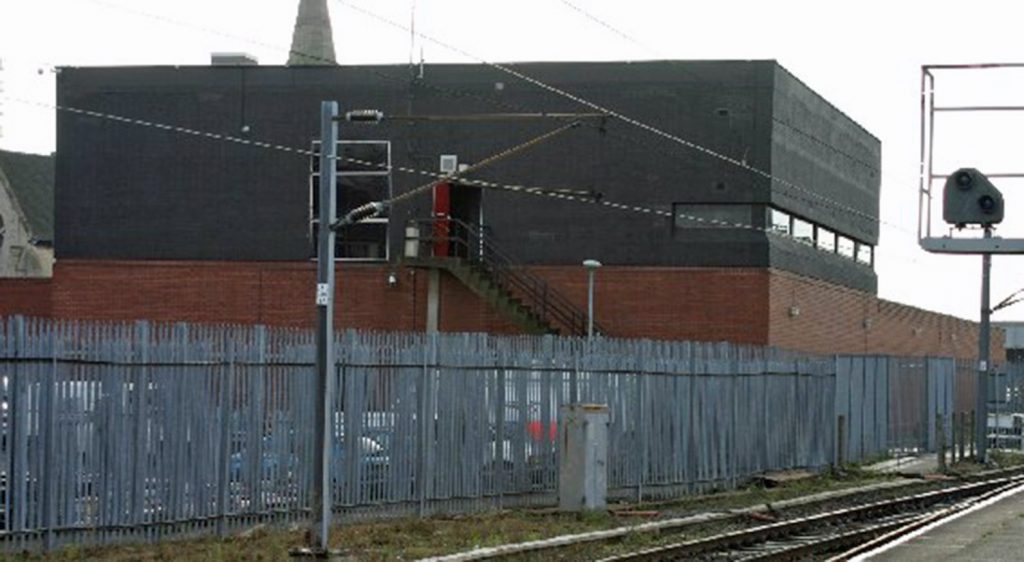
The Grantham area is worked by the signalman on Panel 1 area, which extends on the ECML from Botany Bay, north of Retford, to Stoke Tunnel. This is a large area but the vast majority of it is plain line and the signalman only monitors the progression of trains, with most signals set to automatic working.

The automatic signal D2 can be placed to danger in an emergency by the signalman. Certain automatic signals at critical locations, like ones protecting tunnels or viaducts, have this facility. It is also interesting in that the signal head has what were called ‘pig’s ears’ on it – see the four things sticking out to the right of the lenses? These were lamps of the same colour as the aspects to aid drivers stood close to the signal to see what the signal was showing, because originally the main lenses did not have the special segment (called a hot strip), which they had in later years, that deflects a portion of the light to the right for close-up viewing. This reveals the signal to be an old one reused in the same location, definitely predating the 1970s resignallings (by which time the hot strip had been invented). It probably started life as Highdyke’s Up Advanced Starter.
Photograph by Mel Smith
The operation of the level crossings on the route is undertaken by crossing keepers in the various gate boxes. Freight trains are regulated and looped as necessary; Retford station is generally only taken out of auto operation for the occasional stopping train. So the majority of the signalman’s workload is concentrated on the Newark and Grantham areas.
The lines on the panel are arranged in a double tier to keep the physical size reasonable, with the route from Stoke to just south of Newark on the lower tier, and the lines from south of Newark starting again above the Stoke area on an upper tier and progressing away to Retford and onwards to the Panel 2 signalman’s area. This positions Newark station almost above Grantham, and allows the signalman to concentrate himself mainly in one position without too much walking about.
Below are some pictures of the Grantham area of Doncaster PSB’s panel which I took whilst caretaking the box over Xmas 1992. Note the lack of computer aids in those days, regulating was done the old school way!
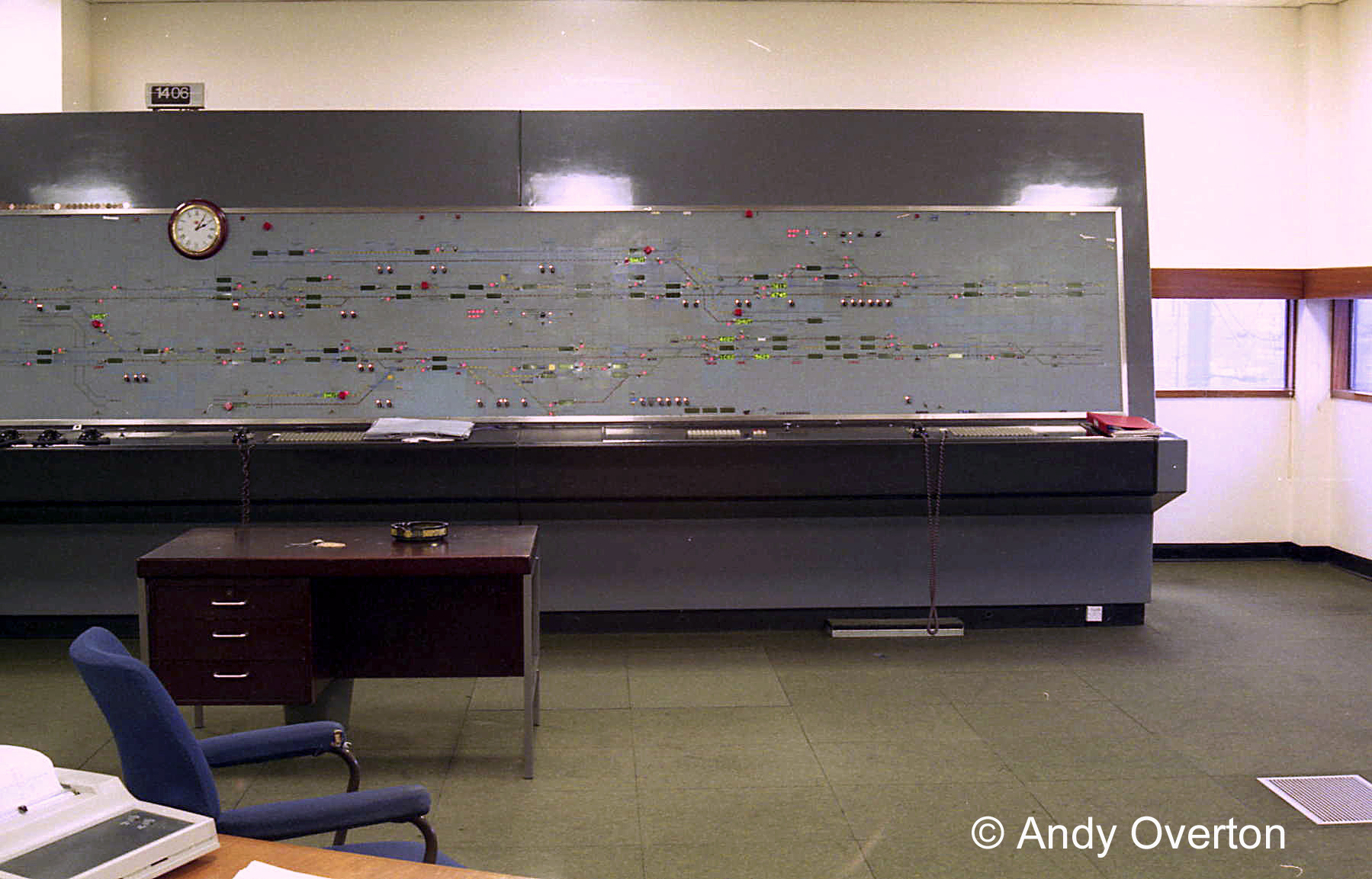



The right hand end of this part of the panel shows Retford, which is the northern limit of the Panel 1 signalman's area, Stoke to Botany Bay. The left half of this picture is the beginning of the Panel 2 signalman's area.
The panel is an NX route setting panel, which means that the signalman does not need to set points and signals individually to signal a train in normal operation. He presses a button at the signal at the start of a route and a button at the next signal along, and all the points move automatically to the right position and the signal clears if it is safe to do so. This process is repeated signal to signal as required but, as described above, most signals away from the junction areas work automatically by themselves so do not need manually setting. Many of the signals that the signalman does need to clear himself can be set to work automatically for the main line route for successive trains. These aids enable the signalman to manage the workload of such a large area himself and takes repetitive work off him, enabling him to concentrate on work that really needs his attention.
During the years I worked in the box the railway layout changed very little. The Grantham area had already been rationalised to some extent, with the removal of the carriage sidings on the west side of the station and the abolition of the facing connection to the Up Slow line immediately ahead of Platform 1. This latter removal could be inconvenient when diverting a freight train onto the Up Slow line for a following passenger as this could no longer be done at the same time as a train was departed from platform 4 towards Stoke. The approach control on the signal at the south end of platform 1, holding it at red until the train was close to it, and it not being visible until the train was in the platform due to line curvature, then the train having to go all the way to Grantham South to actually turn in clear of the Fast line are all disadvantages of rationalisation which persist to this day.

Both signals are relevant to the situation described in the paragraph above. D22, just off the end of platform 1 on the Up Main line, carries above it a junction indicator for the divergence of the Up Slow line at Grantham South, 500 metres further on; prior to rationalisation there had been a connection immediately beyond the end of the platform. D20 controls departures from platform 4 towards Stoke and the south.
Photograph by Mel Smith
Just before I left in 2002 the interlocking at Grantham, which had been installed in 1972 when Grantham (formerly Grantham Yard) box took over the area, was replaced. To house it a new grey REB (Relocatable Equipment Building) was installed to the north of the two brick structures behind platform 1 associated with the earlier interlocking system. During this work the connection to the Muck Bank, by then officially called the S&T Siding, was abolished. The new interlocking was commissioned in the early hours of Monday 25th March 2002.

Photograph by Andy Overton, taken on 7th July 2018.
Grantham was a busy station to work and the signalmen in Doncaster at that time had a very good working relationship with the staff on the station. When you are remote in a Power Box you cannot look out of the window to see that a train is not actually going to depart when you have cleared signals for it and things like that, all you have are indications on a diagram. So it is essential that the staff on the ground tell you promptly about anything untoward or any changes of plan. Signalling systems are very safe and there are often time delays if you clear signals, and then have to put them back to danger, before you can set other routes. And it also works both ways in that any changes of plan a signalman wants to implement need to be run past the station staff in plenty of time, to ensure that the staff can re-arrange their side of things in sufficient time.
On summer Saturdays the station supervisor would check to see if Skegness trains had been formed of more than three coaches and if so let us know so that they could be platformed in platform 4 - although longer trains would fit in platform 3, it would mean passengers using the doors on the narrow platform 2 side, which was undesirable.
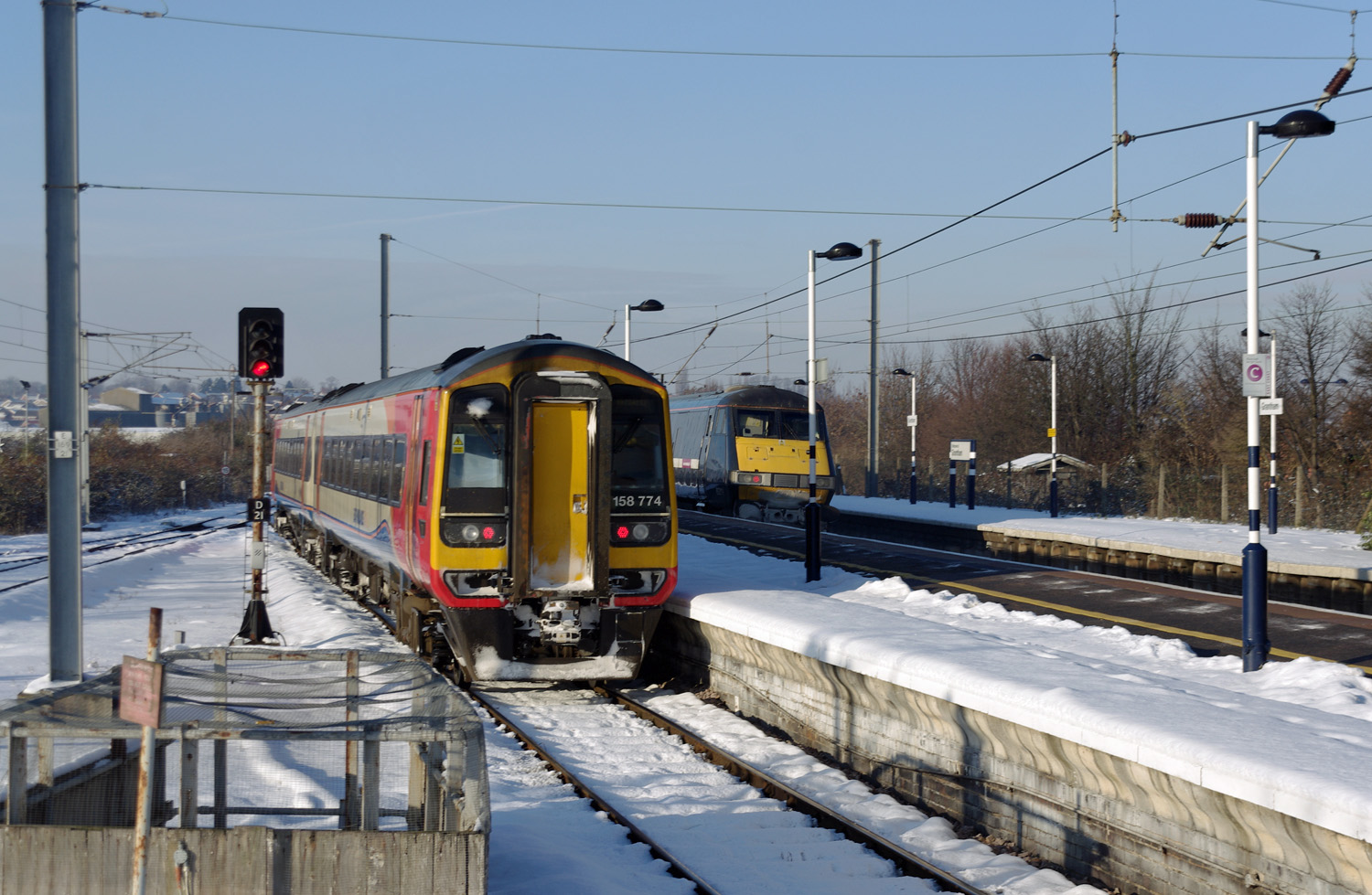
Platform 3 is a single-track bay platform which has platform faces of unequal length. The photographer is standing at the end of the shorter face, which is curtailed because of the light well for the pedestrian tunnel seen in the left foreground. Passengers at the rear of arriving trains which are longer than three coaches must alight on the far side, facing the danger of trains passing at high speed through the adjacent platform 2 as seen here. Not an ideal situation with a crowd of excited families returning from the seaside, so platform 4 is to be preferred (though, hopefully, in summer they wouldn't have the snow to contend with!)
Photograph © Matt Buck

Doncaster's signal D21 controls the exit from platform 3. On the right, visible between the two nearest lamp posts, is signal D23BR, a banner repeater signal which applies to the Down Main line, seen curving away to the right. It is a representation of a semaphore signal using an array of lights, its purpose being to give drivers of approaching trains an earlier view of the indication of a signal which is still out of sight around the curve. A driver who was expecting to find the signal at 'danger' but receives early information that the signal has cleared can accelerate sooner, so benefitting train running performance. Here, the repeater signal is showing that the main signal is at danger (it has a horizontal bar). In the 'clear' indication the bar is at 45˚.
Photograph © Matt Buck
I have to say that after privatisation that spirit of co-operation deteriorated as the old staff left and newer staff with less of an appreciation of wider railway work than their own jobs replaced them, encouraged by their company's 'us-and-them' attitude, and unnecessary delays could be caused or exacerbated. This happened at both ends. During the good times it was a real pleasure to work with the staff at both Grantham and Newark stations, who made my job much easier than it could have been and relieved me of much unnecessary pressure.
The most irritating train to be dealt with at Grantham was always the Rectory tanks. This train, as it does today, comes in from the Nottingham direction onto the Goods line, the loco runs round, and then it departs via the ECML to Newark and on towards Lincoln. This is a legacy of the line between Bottesford West Jcn and Newark having been closed. The problem with the train was that it never ever ran to time, so missed its booked slot on the ECML. By the time it arrived at Grantham, late, it always caused a problem getting it run round between the trains needing to use platforms 3 and 4, and then again getting it away onto the main line between both expresses and local trains. Once on the main line it was a further nuisance all the way, needing to block all the lines at Newark in its progress away to Lincoln. That train must have been responsible for literally weeks worth of delay each year, and all because it never presented itself at Grantham from Rectory on time!
The following video clip shows the 'Rectory tanks' arriving from Nottingham and drawing to a halt on the Goods line on Tuesday 12th April 2016. This train of empty wagons originates at an oil distribution depot at Colwick, Nottingham, which is accessed by rail from Rectory Junction. A short sequence of photographs then shows how the locomotive is detached from the south end of the train, runs through platform 4, reverses onto the north end of the tanks, is attached and, finally, heads back the way it came but takes the Main line towards Newark en route to the Lindsey Oil Refinery at North Killingholme, Lincs. The loaded train takes a different route from the oil refinery to Nottingham and is not seen at Grantham.

Photograph by Mel Smith

Photograph by Mel Smith

Making another 'spot the difference since 2010' point, the platform lighting columns have been equipped with LED lamps.
Photograph by Mel Smith
The rationalisations at Grantham dating from the 1970s, which have left the connection to Nottingham as a bi-directional single track with severe speed restrictions, have always been an operating headache. It is a real bottleneck and makes the theoretical facility of an opportunity to loop a stopping Down express for a faster train to pass almost useless. In the 1990s an evening express to Leeds used to be booked in platform 4 for a non-stop service to overtake it. Around the same time a Skegness to Nottingham service used to be booked to come off the branch at Barkston. This was a recipe for a snarl up, which happened every night. The Leeds train had not been given enough time in the schedule to clear away back onto the main line at Grantham North, bearing in mind the severe speed restrictions on the Slow line. This would then delay the train from Skegness, waiting there to cross over to the Slow line. Behind this would be stood an Up express, which was booked to follow the Skegness train from Barkston. The common sense thing to do, when you could foresee these events unfolding, would be to hold the Skegness train at Barkston and let the Up express go first. This wouldn't cause any more delay to the Skegness train, which would still come to a stand at Grantham North. But in the privatisation era if the signalman made this common sense decision he would be penalised with the delay to the Skegness train, which would be blamed on him for allowing the Up express to go first from Barkston! I hope this example shows why lineside observers often see what seem to be poor regulating decisions nowadays.
In the late 1980s / early 1990s there was a programme to introduce emergency bi-directional signalling on the double-track sections of the ECML. Crossovers were laid in ready for the new signalling and a facing crossover was installed at Grantham South. This was there when I went in the box in 1992 but it was not connected up to power and none of the signalling had yet been installed. Unfortunately the project had not been fully funded and the break-up of BR led to the work never being completed. Some years later this brand new crossover, along with all the others in the Doncaster PSB area awaiting commissioning, were taken back out again and the southern ECML remains to this day vulnerable to disruption owing to the lack of bi-directional facilities which we so nearly got.
The signalling at Grantham was very reliable and I never had an instance of control being lost from Doncaster. The ML Engineering-built panel formerly in Grantham box had been moved to the relay room and could take over control locally, if remote communication were lost, by a member of staff manning it up and operating to the Doncaster signalman’s instructions. There is also the facility, until the member of staff arrives, to set a limited number of routes at Grantham to automatic working using an override system. These comprised the Up and Down main lines throughout the area, plus a route in from the Allington direction to bay platform 3. The idea of this was a legacy of the days when nearly all the trains were the Nottingham – Skegness and return services. The system worked by routing the train into platform 3, once in there it then reset the route back out to Allington. Trains to / from Skegness would reverse there and use the Grantham avoiding line. But, of course, traffic patterns have changed over the years and there are many services to and from Peterborough which run via Nottingham, and the override system is unable to cope with these. Apart from the main line routes it is no longer of much use. The old Local Control Panel originally dating from 1972 was replaced on 25th March 2002 with a new one by TEW in connection with the renewal of the interlocking. At that time there was still a junction at Barkston South, which was abolished on 3rd October 2005 when the Allington Chord was brought into use.
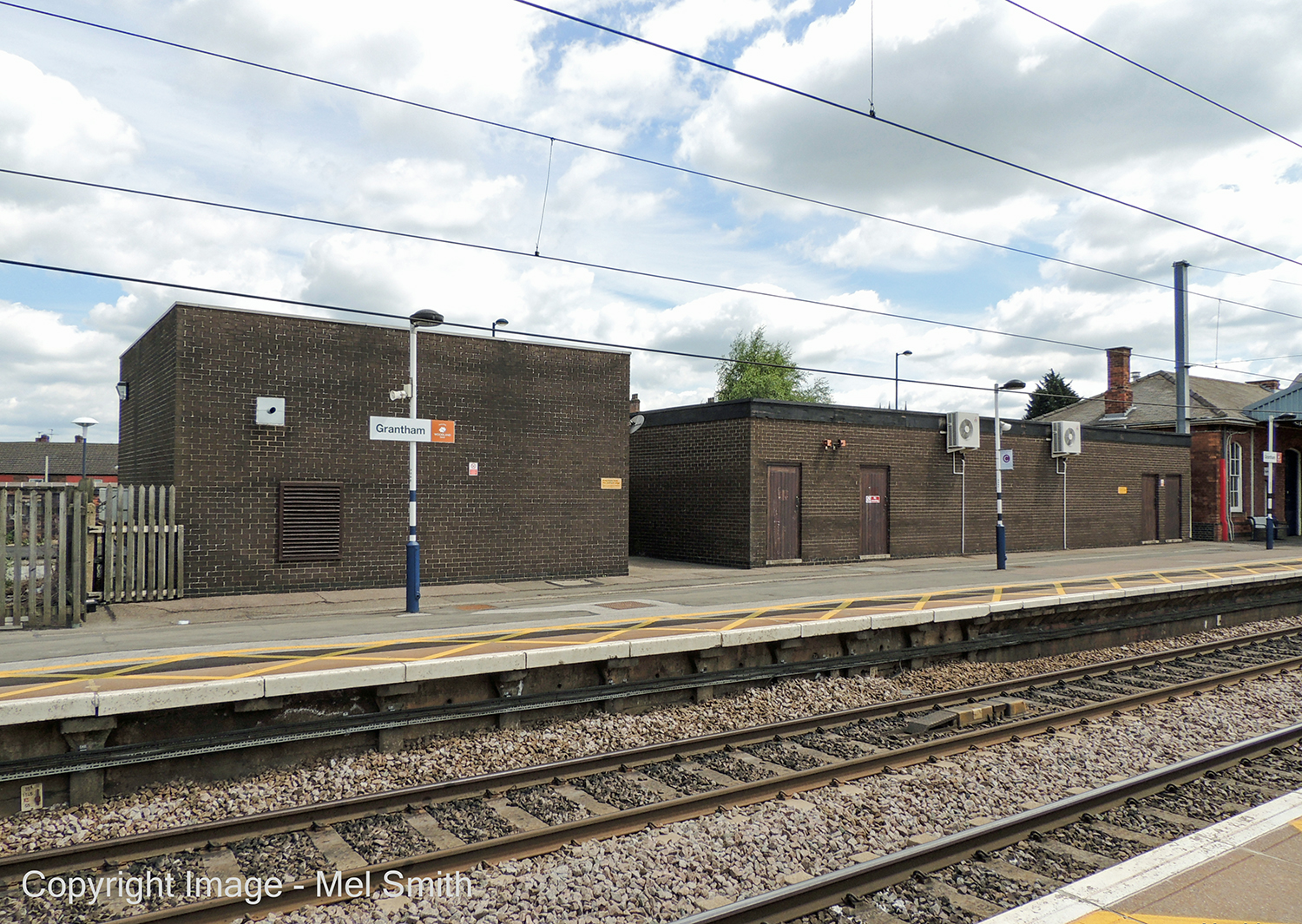
The interlocking installed in 2002 is housed in a new building to the north, along with the new Local Control Panel, as seen in a previous photograph and in the two pictures below.
Photograph by Mel Smith
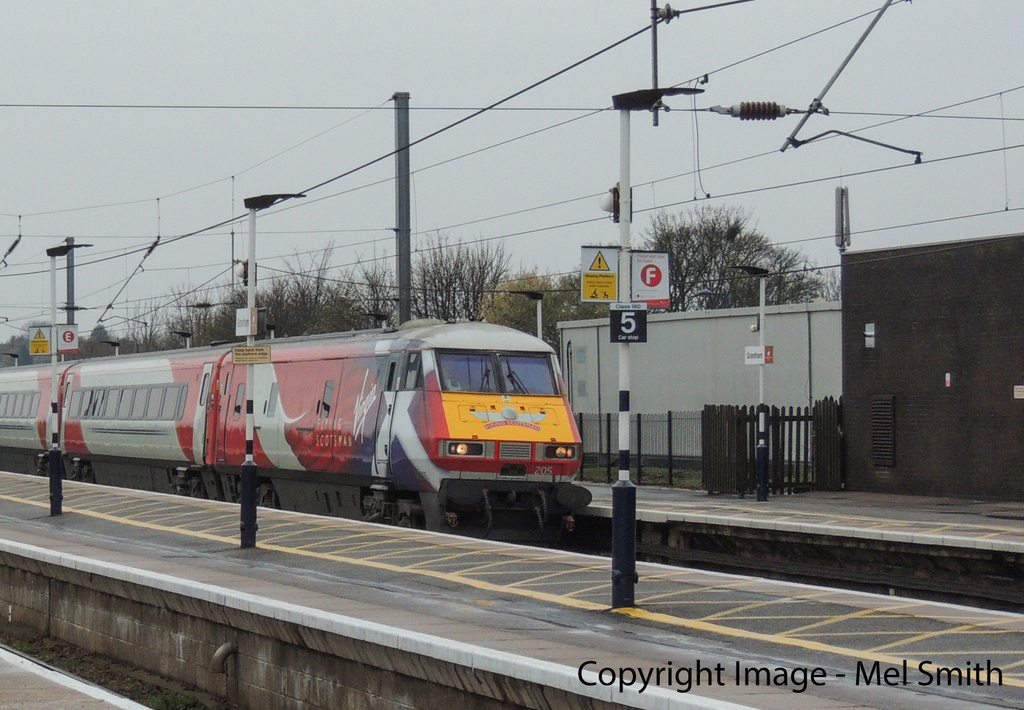
Photograph by Mel Smith

Photograph by Andy Hides
I will finish by explaining an oddity of the signalling at Grantham which some may have noticed. The two signals on the Up Slow / Fast lines protecting Highdyke Jcn have the unusual numbers of 4B and 6B. The reason for this is that the last two signals in that direction controlled by the Grantham interlocking used to be 4 and 6 at Great Ponton Jcn, where a Slow to Fast turnout was situated. When Highdyke box closed on 24 October 1977 this turnout was abolished and the Grantham interlocking area extended to cover the Highdyke area, with the Slow to Fast turnout there. But there were insufficient unused numbers left in the sequence to cover the new signals in this area, so the new signals at Highdyke became 4B and 6B.
Andy Overton
Back to Signalling and Signal Boxes


Thank you for that really interesting article.
A fascinating article by my colleague Mr Overton. As mentioned the level crossings between Grantham and Newark, and those beyond towards Doncaster are supervised by Gate Boxes at Claypole, Carlton and Ranskill respectively; these also cover the work previously undertaken by Barnby Road, Bathley and Grove Road, though these locations do retain their own remote NX panels. (NX is a term used for signalling defined by the Entry and Exit buttons that are operated in order to set a route.)
Meanwhile the TEW panel at Grantham is now housed in the white building, behind Platform 1.
Well done Andy for a good article, I too spent many happy years (28!) in Doncaster box but, as you say in your article, I enjoyed the early, less computer reliant, days.